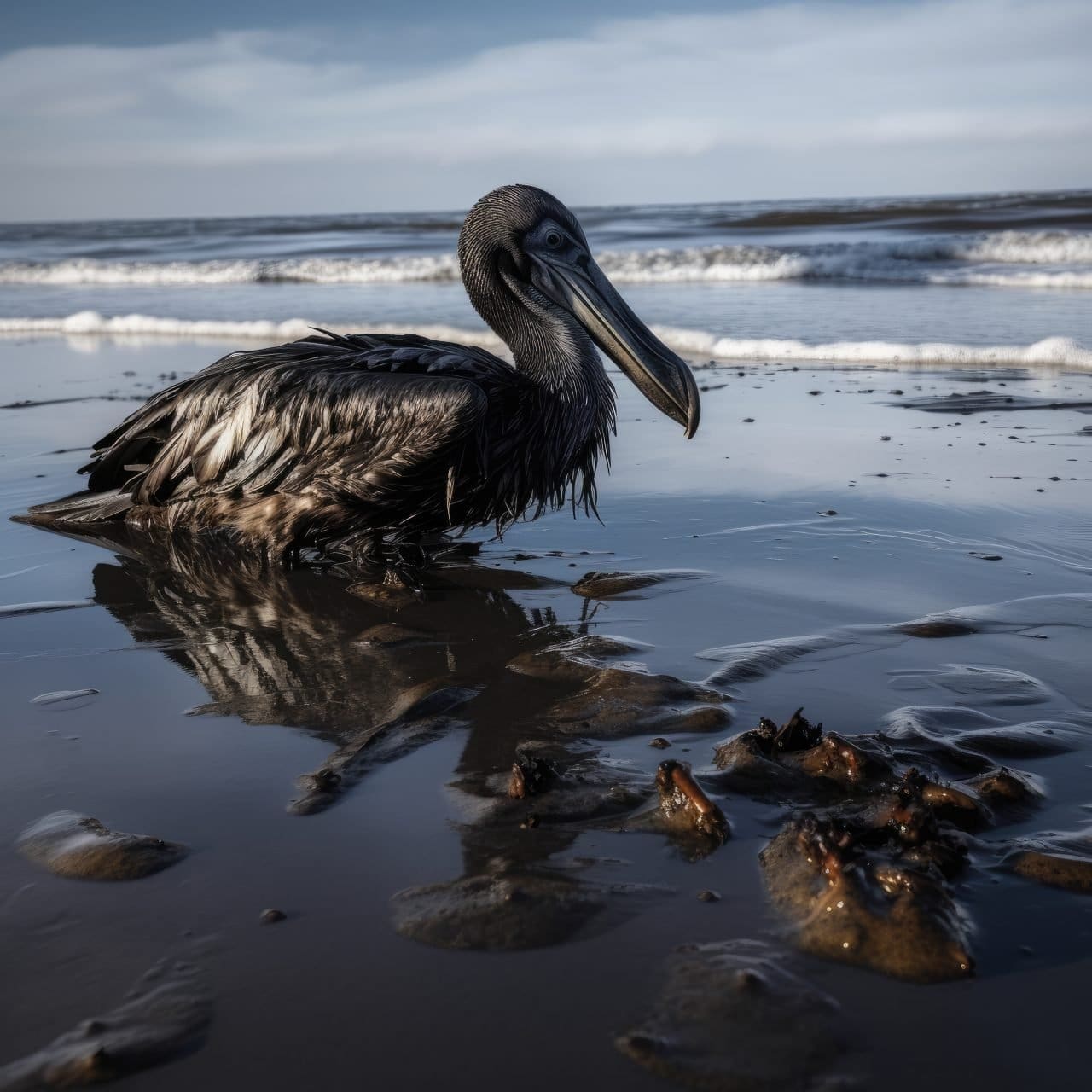Introduction: Unraveling the Oil Spill Environmental Impact
The aftermath of an oil spill extends far beyond the initial contamination and cleanup efforts. Understanding the oil spill environmental impact, especially the long-term effects on marine ecosystems, is crucial in grasping the full extent of these disasters. This article explores the profound and lasting consequences of oil spills, shedding light on their impact on marine life, from the tiniest plankton to the largest marine mammals, and the overall health of marine ecosystems.
The Immediate Aftermath of Oil Spills
The Onset of Environmental Damage
Immediately following an oil spill, the visible effects are often devastating. Oil slicks spread across the water surface, impeding sunlight penetration and affecting photosynthesis in marine plants and phytoplankton. For marine animals, the oil spill environmental impact is direct and often lethal. Birds and mammals coated in oil struggle to maintain body temperature, leading to hypothermia, while others ingest the toxic substance, leading to poisoning.
Long-Term Ecological Consequences
Pervasive and Persistent Damage
The oil spill environmental impact lingers for years, sometimes decades, post-cleanup. Oil residues can persist in the marine environment, continuing to affect ecosystems in several ways:
- Disruption of Food Chains: Oil spills can decimate populations of smaller marine creatures, disrupting local food chains. This loss reverberates up the food chain, impacting larger predators and the overall balance of the ecosystem.
- Habitat Destruction: Sensitive habitats like coral reefs and mangroves are particularly vulnerable to oil spills. These ecosystems can suffer long-term damage, affecting the myriad species that depend on them.
- Reproductive and Health Issues in Marine Life: Exposure to oil can cause long-term health issues in marine animals, including reproductive problems, which can lead to declining populations over time.
- Alteration of Marine Behavior: Oil spills can alter the behavioral patterns of marine life. Affected animals may change their feeding habits, migration routes, or breeding grounds, leading to broader ecological imbalances.
The Broader Environmental Impact
Ecosystem Health and Human Well-being
The oil spill environmental impact extends to the overall health of the marine ecosystems, which play a crucial role in maintaining the planet’s climate, carbon cycle, and overall ecological balance. Furthermore, healthy marine ecosystems are vital for human well-being, supporting industries like fishing and tourism and contributing to the livelihoods of coastal communities.
Innovations in Addressing the Environmental Impact
Moving Towards Recovery and Preservation
While the oil spill environmental impact is significant, innovations in cleanup and recovery methods offer hope. New technologies and approaches are being developed to mitigate the long-term effects of oil spills, aiming for quicker recovery of ecosystems and better protection of marine life.

oil spill environmental impact
A Call to Action for Marine Preservation
Understanding the oil spill environmental impact is just the first step. It’s a call to action for stronger preventive measures, effective response strategies, and a commitment to the long-term health of marine ecosystems. As we continue to navigate the challenges posed by oil spills, our collective efforts in innovation, conservation, and education will be key in safeguarding the oceans for future generations.
Innovations in Wildlife Treatment Post-Oil Spills
Emerging Techniques in Wildlife Rehabilitation
Advancing Beyond Traditional Methods
In the wake of oil spills, the conventional methods of wildlife treatment often fall short in addressing the complex needs of affected animals. Innovations in wildlife rehabilitation are crucial for improving the survival rates and recovery of these creatures. This section will explore cutting-edge techniques and therapies being developed and implemented, including new cleaning agents, advanced medical treatments, and improved rehabilitation practices that are more effective and less stressful for wildlife.
The Role of Research in Wildlife Recovery
Understanding Long-Term Health Impacts
Post-oil spill, the focus on immediate rescue and treatment of wildlife is paramount, but understanding the long-term health impacts on these animals is equally important. Research into the prolonged effects of oil exposure on wildlife’s health, behavior, and reproduction is leading to more informed and effective treatment protocols. This section will delve into current research initiatives and how their findings are shaping the future of wildlife treatment post-oil spills.
Collaboration Between Organizations
A United Front in Wildlife Rescue
Successful wildlife treatment post-oil spills often requires a collaborative approach. This section will highlight how various wildlife organizations, environmental agencies, and research institutions are working together to develop and implement effective treatment strategies. It will explore how these partnerships lead to resource sharing, knowledge exchange, and unified efforts in wildlife rescue operations.
Public Involvement and Education
Raising Awareness and Encouraging Participation
Public awareness and involvement are critical in the context of wildlife treatment post-oil spills. Educating the community about the impact of oil spills on wildlife and how they can contribute to rescue efforts is vital. This section will discuss public education campaigns, volunteer opportunities, and how community involvement can make a significant difference in the treatment and recovery of affected wildlife.
Advances in Post-Release Monitoring
Tracking the Long-Term Recovery
Post-release monitoring of wildlife treated for oil spill exposure is gaining importance. This practice involves tracking the health, survival, and integration of animals once they return to their natural habitats. Innovations in tracking technologies and methodologies are providing valuable insights into the effectiveness of treatment methods and the long-term wellbeing of these animals. This section will cover the latest advancements in post-release monitoring and its significance in wildlife treatment post-oil spills.














